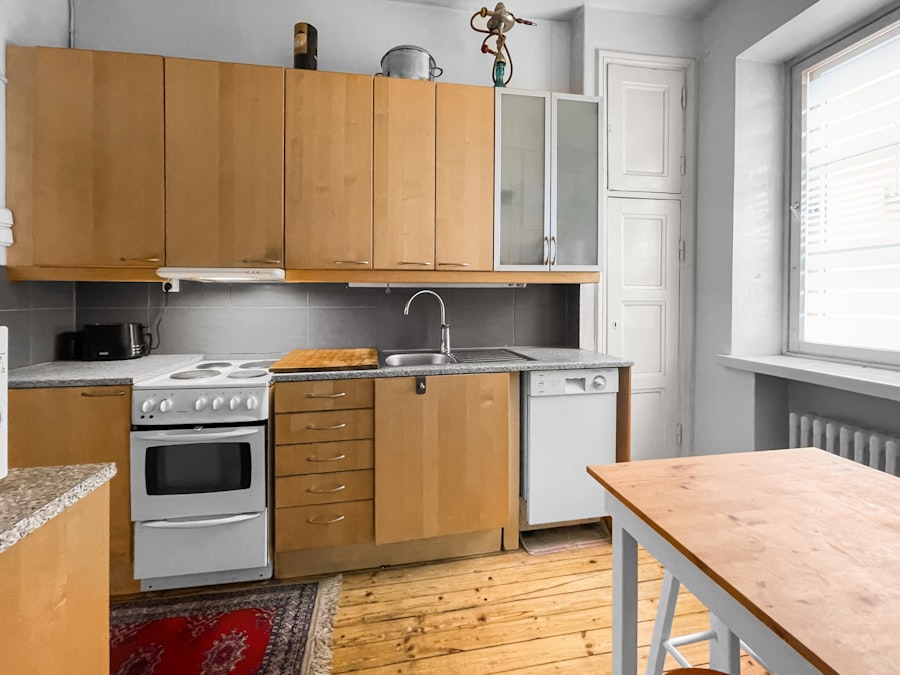Establishing a budget is the cornerstone of any successful home renovation project. It serves as a financial blueprint that guides all subsequent decisions, from the scope of work to the choice of materials. A well-defined budget not only helps in managing expenses but also sets realistic expectations for what can be achieved within the available financial resources.
To begin, homeowners should assess their current financial situation, taking into account savings, potential loans, and any other sources of funding. This initial assessment will provide a clearer picture of how much can be allocated to the renovation without causing undue financial strain. Once a preliminary budget is established, it is crucial to break it down into specific categories.
This includes labor, materials, permits, and a contingency fund for unexpected costs. A common rule of thumb is to allocate about 10-20% of the total budget for unforeseen expenses, as renovations often reveal hidden issues that require additional funds. By categorizing expenses, homeowners can prioritize their spending and make informed decisions about where to cut costs if necessary.
For instance, if the budget is tight, opting for less expensive materials or delaying certain aspects of the project can help keep the renovation on track financially.
Key Takeaways
- Setting a budget is the first step in any home improvement project and helps to keep costs in check.
- Understanding the scope of work is crucial to avoid any surprises and ensure that all necessary tasks are accounted for.
- Labor costs can vary depending on the complexity of the project and the experience of the workers involved.
- Materials and appliances can make a significant impact on the overall cost of the project, so it’s important to choose wisely.
- Permits and inspections are often required for major home improvement projects and should be factored into the budget and timeline.
Understanding the Scope of Work
Defining the scope of work is essential for ensuring that everyone involved in the renovation is on the same page. This involves detailing what specific tasks will be completed, the timeline for each phase, and the overall goals of the project. A clear scope not only helps in managing expectations but also serves as a reference point for measuring progress throughout the renovation process.
Homeowners should take time to consider their needs and desires, as well as any limitations imposed by their budget or existing structure. In addition to outlining the tasks to be completed, understanding the scope of work also involves recognizing any potential challenges that may arise during the renovation. For example, if a homeowner plans to knock down a wall to create an open-concept living space, they must consider whether that wall is load-bearing and what structural reinforcements may be necessary.
Engaging with professionals early in the planning stage can provide valuable insights into these complexities, ensuring that the scope is realistic and achievable within the set budget and timeline.
Labor Costs

Labor costs are often one of the most significant expenses in a home renovation project. These costs can vary widely depending on factors such as location, the complexity of the work, and the experience level of the contractors hired. In urban areas, labor rates tend to be higher due to increased demand and living costs.
Homeowners should conduct thorough research to understand local labor rates and obtain multiple quotes from different contractors to ensure they are getting a fair price. When evaluating labor costs, it is also essential to consider the type of work being performed. Specialized trades such as electrical work or plumbing typically command higher rates due to the expertise required.
Additionally, homeowners should factor in the potential need for subcontractors if their primary contractor does not have all the necessary skills in-house. This can add another layer of complexity and cost to the project. By understanding these dynamics, homeowners can make informed decisions about hiring practices and budget allocations.
Materials and Appliances
| Category | Metrics |
|---|---|
| Materials | Recycled content |
| Appliances | Energy efficiency rating |
| Materials | Carbon footprint |
| Appliances | Water usage |
The selection of materials and appliances plays a pivotal role in both the aesthetic appeal and functionality of a renovated space. Homeowners must balance quality with cost when choosing materials, as cheaper options may lead to higher maintenance costs or shorter lifespans. For instance, while laminate countertops may be more affordable upfront compared to granite or quartz, they may not withstand wear and tear as effectively over time.
Therefore, it is crucial to consider long-term value rather than just initial expenditure. In addition to countertops, other materials such as flooring, cabinetry, and fixtures should also be carefully selected based on durability and style preferences. Energy-efficient appliances are another important consideration; while they may have a higher initial cost, they can lead to significant savings on utility bills over time.
Homeowners should take advantage of sales events or consider purchasing materials in bulk to reduce costs further. Researching various suppliers and comparing prices can yield substantial savings without compromising quality.
Permits and Inspections
Navigating the world of permits and inspections is an often-overlooked aspect of home renovations that can significantly impact both timelines and budgets. Many municipalities require permits for structural changes, electrical work, plumbing modifications, or even significant cosmetic updates. Failing to secure the necessary permits can result in fines or complications when selling the home in the future.
Therefore, it is essential for homeowners to familiarize themselves with local regulations before commencing any work. The process of obtaining permits typically involves submitting detailed plans and specifications to local authorities for approval. This can take time, so homeowners should factor this into their overall project timeline.
Additionally, inspections may be required at various stages of the renovation to ensure compliance with building codes and safety standards. While these steps may seem cumbersome, they are crucial for ensuring that the work is done correctly and safely. Engaging with professionals who are familiar with local regulations can streamline this process and help avoid potential pitfalls.
Unexpected Expenses

One of the most challenging aspects of home renovations is dealing with unexpected expenses that can arise at any stage of the project. These surprises can range from discovering mold behind walls to needing additional structural support when removing a wall. Such issues can quickly derail a carefully planned budget and timeline if not adequately prepared for.
Therefore, it is essential for homeowners to maintain a flexible mindset and be ready to adapt their plans as needed. To mitigate the impact of unexpected expenses, homeowners should prioritize creating a robust contingency fund within their budget. This fund should ideally cover 10-20% of the total renovation costs and be readily accessible when needed.
Additionally, conducting thorough inspections before starting work can help identify potential issues early on, allowing for more accurate budgeting and planning. Engaging experienced contractors who can foresee common problems in similar projects can also provide valuable insights that help minimize surprises down the line.
The decision between hiring a professional contractor or taking a DIY approach is one that many homeowners grapple with during renovations. Each option has its advantages and disadvantages that must be weighed carefully against personal skills, available time, and budget constraints. Hiring professionals often ensures a higher quality of work due to their expertise and experience in handling various aspects of renovations.
They are also familiar with local building codes and regulations, which can save homeowners from potential legal issues down the line. On the other hand, DIY projects can offer significant cost savings and a sense of personal accomplishment. Homeowners who possess skills in carpentry, plumbing, or electrical work may find that they can complete certain tasks themselves without compromising quality.
However, it is crucial to recognize one’s limitations; attempting complex tasks without adequate knowledge can lead to costly mistakes or safety hazards. A balanced approach may involve hiring professionals for critical tasks while tackling simpler projects independently, allowing homeowners to save money while still achieving their vision.
Return on Investment
Understanding return on investment (ROI) is vital for homeowners considering renovations with an eye toward future resale value. Certain renovations tend to yield higher returns than others; for example, kitchen remodels and bathroom upgrades consistently rank among the top projects for ROI. According to various studies conducted by organizations like Remodeling Magazine, homeowners can expect to recoup approximately 70-80% of their investment in these areas when selling their homes.
However, ROI is not solely about monetary returns; it also encompasses personal satisfaction and improved quality of life within the home. Homeowners should consider how renovations will enhance their living experience even if they do not yield significant financial returns upon resale. For instance, creating an outdoor living space may not dramatically increase property value but could greatly enhance enjoyment for family gatherings or personal relaxation.
Ultimately, understanding both financial implications and personal benefits will guide homeowners in making informed decisions about their renovation projects.



